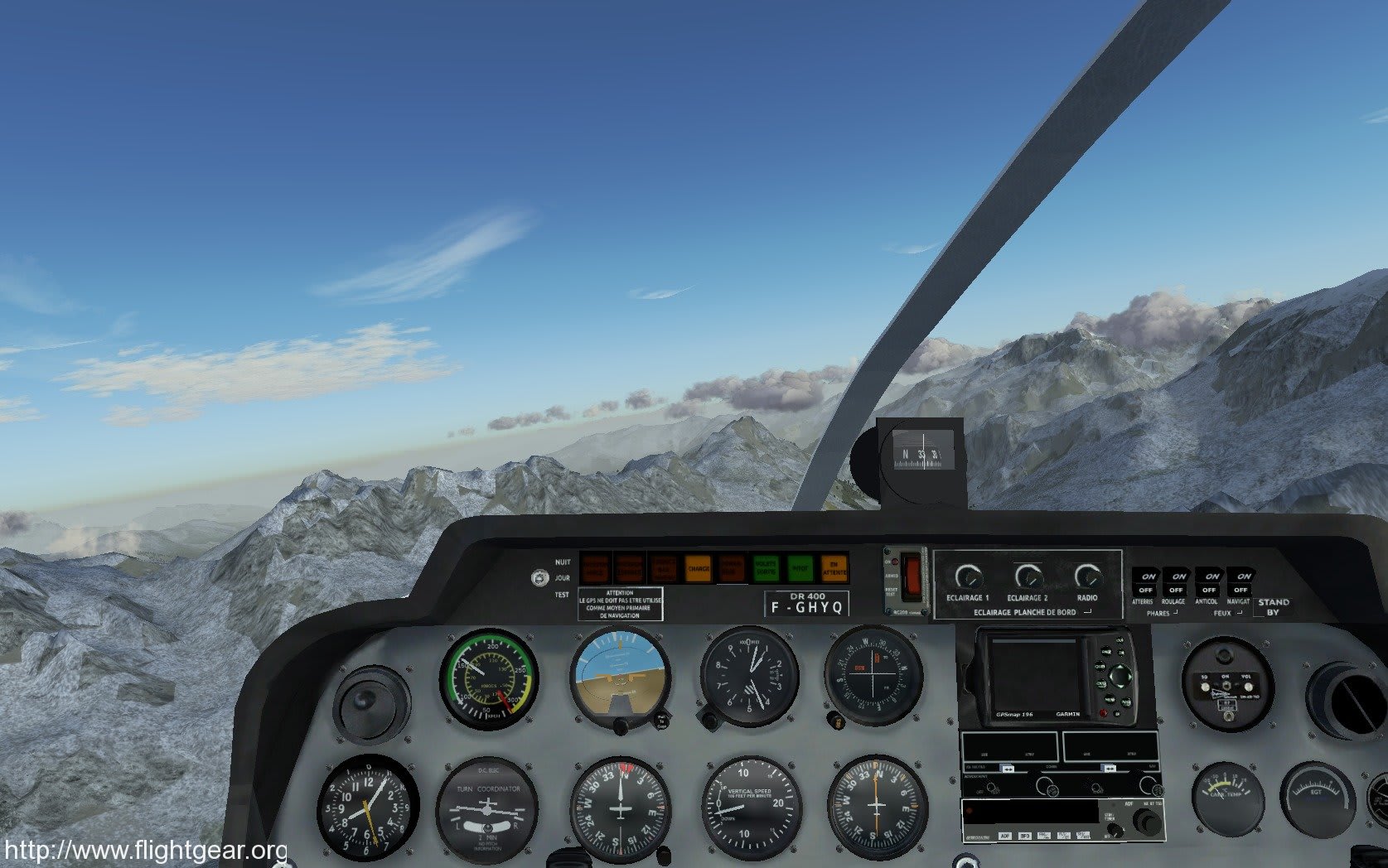Flight Gear For Mac

Flight Simulator Interface About the FlightGear Interface The Aerospace Blockset™ product supports an interface to the third-party FlightGear flight simulator, open-source software available through a GNU General Public License (GPL). The FlightGear flight simulator interface included with the blockset is a unidirectional transmission link from the Simulink ® interface to FlightGear using the FlightGear published netfdm binary data exchange protocol. Data is transmitted via UDP network packets to a running instance of FlightGear. The blockset supports multiple standard binary distributions of FlightGear. See for interface details. FlightGear is a separate software entity not created, owned, or maintained by MathWorks. v2018.1.
v2017.3. v2017.1.
v2016.3. v2016.1. v3.4.
 Right click on one of the boxes and highlight the ‘Substitutions’ option and choose the ‘Show Substitutions’ link. At this stage, you must think that Apple is nuts because you were supposed to fill in all these details with a lousy mouse. The solution is a little bit strange but actually quite simple: 1. The next screen is filled with five empty boxes that you are supposed to enter your name/password/etc.
Right click on one of the boxes and highlight the ‘Substitutions’ option and choose the ‘Show Substitutions’ link. At this stage, you must think that Apple is nuts because you were supposed to fill in all these details with a lousy mouse. The solution is a little bit strange but actually quite simple: 1. The next screen is filled with five empty boxes that you are supposed to enter your name/password/etc.
v3.2. v3.0. v2.12. v2.10.
v2.8. v2.6. v2.4. v2.0 If you are using a FlightGear version older than 2.0, update your FlightGear installation to a supported version.
When you open the model, the software returns a warning or error. Obtain updated FlightGear software from in the download area.
Obtain FlightGear You can obtain FlightGear from the FlightGear website in the download area or by ordering CDs from FlightGear. The download area contains extensive documentation for installation and configuration. Because FlightGear is an open-source project, source downloads are also available for customizing and porting to custom environments. Configure Your Computer for FlightGear To use FlightGear, you must have a high-performance graphics card with stable drivers For more information, see the FlightGear CD distribution or the hardware requirements and documentation areas of the FlightGear website. FlightGear performance and stability can be sensitive to computer video cards, driver versions, and driver settings. You need OpenGL ® support with hardware acceleration activated.
Without proper setup, performance can drop from about a 30 frames-per-second (fps) update rate to less than 1 fps. If your system allows you to update OpenGL settings, modify them to improve performance. Graphics Recommendations for Windows For Windows ® systems, use the following graphics recommendations. A graphics card with acceptable OpenGL performance (as outlined at the FlightGear website).
The latest tested and stable driver release for your video card. Test the driver thoroughly on a few computers before deploying to others. For more information, see. Setup on Linux, Macintosh, and Other Platforms FlightGear distributions are available for Linux ®, Macintosh, and other platforms from the FlightGear website,. Installation on these platforms, like Windows, requires careful configuration of graphics cards and drivers. Consult the documentation and hardware requirements sections at the FlightGear website. FlightGear and Video Cards in Windows Systems Your computer built-in video card, such as NVIDIA ® cards, can conflict with FlightGear shaders.
Consider this workaround. Configure your computer graphics card before you install FlightGear. See the preceding section,. Shut down all running applications (including the MATLAB interface) before installing FlightGear.
Install FlightGear in a folder path name composed of ASCII characters. MathWorks tests indicate that the operational stability of FlightGear is especially sensitive during startup. It is best not to move, resize, mouse over, overlap, or cover up the FlightGear window until the initial simulation scene appears after the startup splash screen fades out. Aerospace Blockset supports FlightGear on several platforms. This table lists the properties to consider before you start to use FlightGear. FlightGear Property Folder Description Platforms Typical Location FlightGearBaseDirectory FlightGear installation folder. Windows 64-bit C: Program Files FlightGear (default) Linux Folder into which you installed FlightGear Mac /Applications (folder to which you dragged the FlightGear icon) GeometryModelName Model geometry folder Windows 64-bit C: Program Files FlightGear data Aircraft HL20 (default) Linux $FlightGearBaseDirectory/data/Aircraft/HL20 Mac $FlightGearBaseDirectory/FlightGear.app/Contents/Resources/data/Aircraft/HL20 Install Additional FlightGear Scenery When you install the FlightGear software, the installation provides a basic level of scenery files.
Flight Gear 2017 Mac
The FlightGear documentation guides you through installing scenery as part the general FlightGear installation. If you need to install more FlightGear scenery files, see the instructions at. The instructions describe how to install the additional scenery in a default location. MathWorks ® recommends that you follow those instructions.
If you must install additional scenery in a nonstandard location, try setting the FGSCENERY environment variable in the script output from the block. See the documentation at for a description of the FGSCENERY variable. If you do not download scenery, you can direct FlightGear to download it automatically during simulation by selecting the Generate Run Script block Install FlightGear scenery during simulation (requires Internet connection) check box.
How to use FlightGearMap for PC and MAC You can run all Android games and applications on your PC or MAC computer. Using a free software called Bluestacks, you don't need to purchase anything but games or applications it self if it isn't free. Download Bluestacks from. Install BlueStacks from installation file with following the on-screen instructions.
Once Bluestacks is installed add your Google account in it. Type FlightGearMap in Search bar and install it. Now you can use FlightGearMap on your PC or MAC.